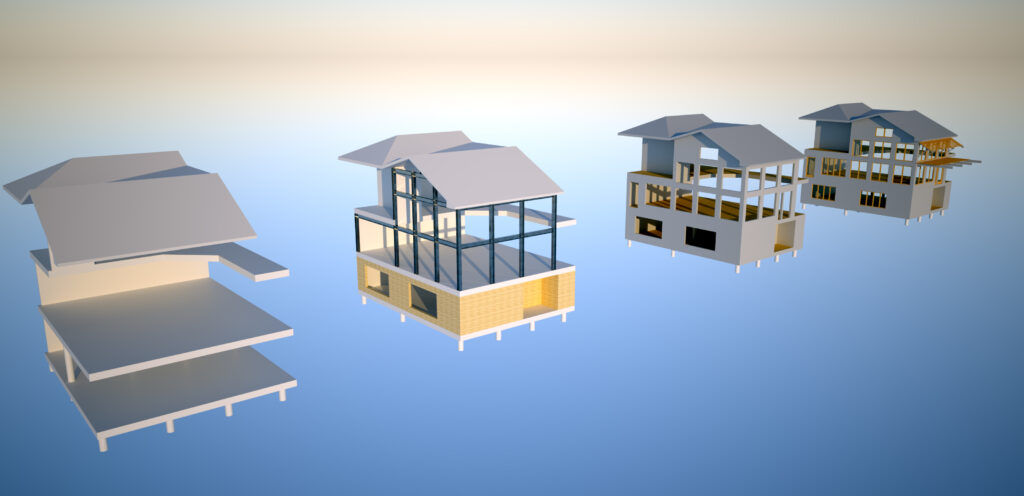Flashing Sans Trench Coat
Flashing is probably the most important concept in construction. Shelters are intended to keep people safe from the elements. Keep in the warmth, keep out the rain. Keeping out the rain is probably the most important aspect. When the rain gets in, it causes a lot of problems. There’s a comfort aspect to not being wet. But even more so, over time, water infiltration causes mold, rot, and structural disintegration. The images at the top of this post come from a project we worked on where poor flashing had allowed water into the structural frame causing the vaulted great space to collapse under a storm. We did those images to help the client understand how the repair would come together.
To avoid problems like this, it is important that contractors install flashing correctly during construction. Although most products very in specifics, the generalities in flashing come down to shedding and not trapping water. Most flashing is made of up layers of materials that work together to keep water from penetrating the weather barrier. The first barrier is your siding or roofing. Behind that layer is a weather barrier which stops any water that finds it’s way through. That water proofs most of your building, however there are the intersections of materials, planes, or penetrations. This is everything from where roofs meet walls, siding transitions, or windows and doors. These locations require extra care and are the point that is the most common failure.
Some Flashing Advice
Being able to determine if your flashing is correct is probably not something most homeowners can fully inspect. One key tip we can share is that although caulk and sealants are important components of flashing systems, they are often abused or installed incorrectly. This is because they can be very effective at stopping infiltration. However, when overused, they can trap water that does make it between layers and tend to wear out over time leading to cracking and failure of the seal.
A last piece of advice is that no flashing is perfect. Where we are, in the midatlantic, we get storms with heavy rains and swirling winds. That combination can drive water in weird ways where a pathway to allow water out as is appropriate can allow water to flow against gravity and into spaces in weird ways. A single leak from a bad storm isn’t necessarily a concern, it is a consistent problem that says you need a qualified professional to address it.

